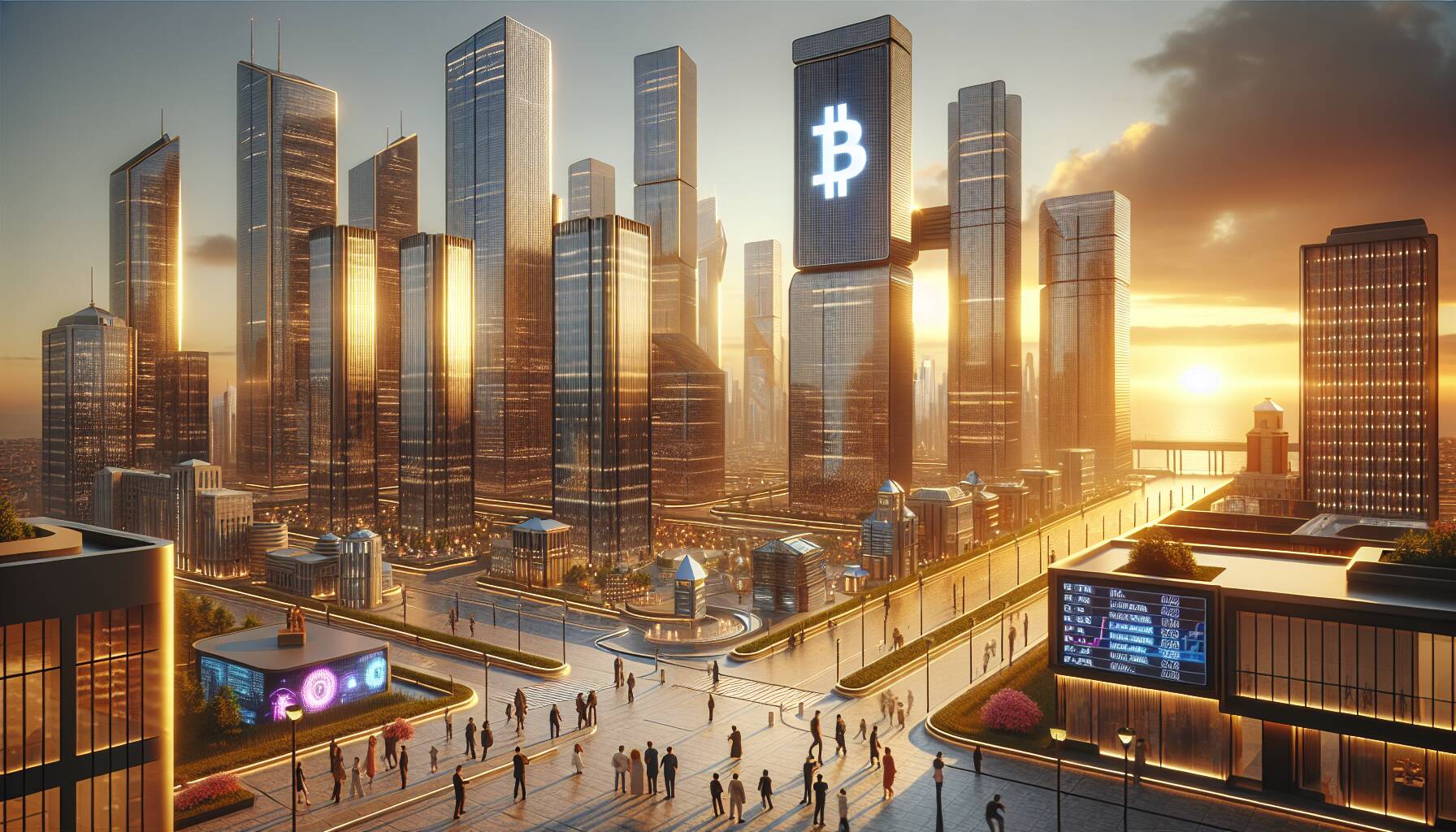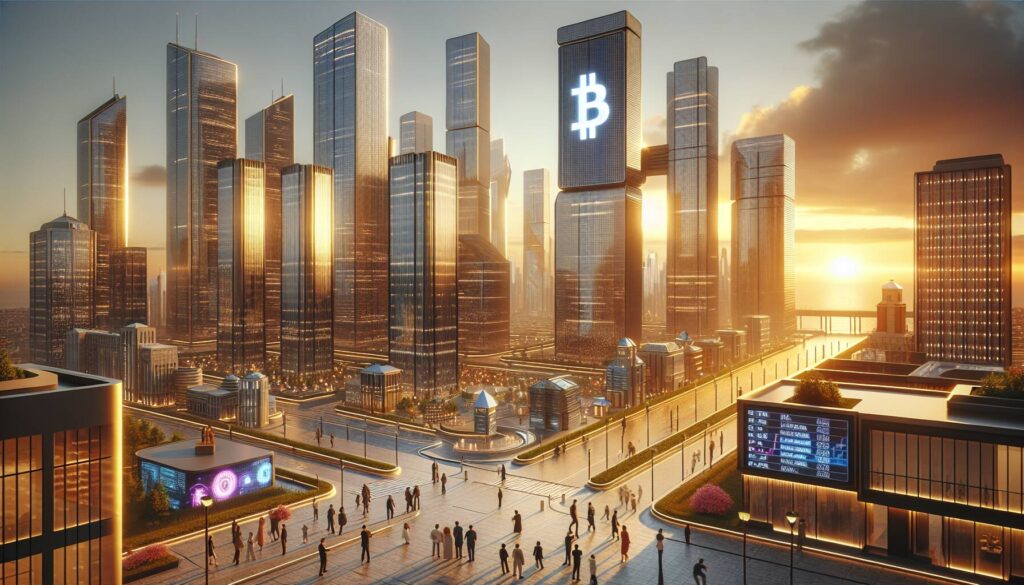In a land where the morning sun kisses the verdant peaks of the Conchagua volcano, whispers of a groundbreaking vision continue to swirl. This vision, aptly named Bitcoin City, was announced by El Salvador’s dynamic President Nayib Bukele in 2021. Promising to transform the area into a visionary enclave adorned with eco-friendly innovation, the anticipated metropolis is designed to harmonize with its breathtaking surroundings, boasting a layout reminiscent of the Bitcoin logo and vibrant structures aimed at drawing global attention.
As I embarked on a journey to this burgeoning concept, I ventured through the humid streets of Conchagua, a quaint village nestled at the foot of the volcano, where the echoes of school children and the charm of colonial architecture transport visitors back in time. With local insights revealing that no significant construction has commenced and few foreign visitors grace the town, echoes of skepticism mingle with hope among the villagers. Yet, Mayor Margarito García welcomed the intrigue Bitcoin City brings to the local economy, highlighting a proposed Pacific Airport designed to complement rapid tourism growth, which is set to break ground in 2025.
“These are only words,” said García, reflecting the cautious sentiment surrounding current developments.
Bukele’s dream for Bitcoin City encompasses ambitious plans for infrastructure, including an airport, a port, and commercial zones, all powered by geothermal energy harnessed from the volcano itself. There’s an air of uncertainty, however, as the financing via a Bitcoin-backed Volcano Bond, first proposed in 2022, has yet to materialize. With regulatory approvals in the rearview mirror and expectations revving for a 2024 launch, the future of this once-fanciful ideal stands on tenuous ground.
The journey to Bitcoin City isn’t just a trek to construction sites; it symbolizes a quest for innovation, hope, and, potentially, a new chapter for El Salvador as it embraces cryptocurrency in an unprecedented manner. While the world watches closely, the dream of Bitcoin City hangs delicately in the balance, promising to redefine the landscape of not just this charming region but possibly the broader domain of digital finance.

Bitcoin City and Its Impact on El Salvador
The ambitious project of Bitcoin City, announced by President Nayib Bukele, aims to position El Salvador at the forefront of the cryptocurrency revolution. Here are some key points regarding the project and its potential implications for readers:
- Location and Vision:
- Bitcoin City is planned at the base of Conchagua volcano, envisioned as a modern utopia.
- The city is designed to be circular and includes amenities such as an airport, port, and residential areas.
- Economic Impact:
- No income, profit, property, or hiring taxes are proposed, suggesting a unique economic environment.
- VAT will be applicable, with a portion funding municipal bonds and maintenance.
- Geothermal Energy Use:
- The city aims to utilize the geothermal energy of the volcano, addressing environmental concerns associated with Bitcoin mining.
- Funding through Volcano Bonds:
- Construction is expected to be funded via billion in bitcoin-backed tokenized bonds.
- Initial plans for the issuance have faced delays, causing uncertainty about the timeline.
- Tourism Boost:
- The region is garnering attention from tourists, which may bolster the local economy, as noted by local officials.
- Development of a new airport could help improve access and increase visitor numbers.
- Uncertain Future:
- Construction timelines remain vague, with potential delays mirroring other large-scale projects globally.
- The initiative could dramatically alter economic landscapes in the region, but its feasibility is yet to be proven.
“These are only words,” said Margarito García from the mayor’s office about the future of Bitcoin City, emphasizing the skepticism surrounding the project.
The development of Bitcoin City could have various implications for individuals, especially those interested in cryptocurrency and investment opportunities. Additionally, the success or failure of this project may influence perceptions of economic strategies in emerging markets.
Examining the Futuristic Vision of Bitcoin City in El Salvador
The ambitious prospect of Bitcoin City, envisioned by President Nayib Bukele, bears an intriguing resemblance to other modern urban projects around the globe, such as NEOM in Saudi Arabia. These initiatives, often touted as beacon projects of sustainability and innovation, share key advantages and drawbacks that can significantly impact their respective regions and economies.
Competitive Advantages: One of the primary advantages of Bitcoin City lies in its conceptualization as a tax-free haven dedicated to cryptocurrencies. The promise of zero income tax, profit tax, and property tax could attract digital nomads, technology firms, and crypto enthusiasts from around the world, potentially turning El Salvador into a major hub for innovative financial technologies. Furthermore, the integration of geothermal energy as a primary power source demonstrates a commitment to environmental sustainability, positioning Bitcoin City as a cutting-edge, eco-friendly metropolis.
In contrast, NEOM is similarly ambitious, boasting plans for an advanced economy built around green technology and biotech. However, the stark difference in governmental support and infrastructure readiness between these two projects could give Bitcoin City an edge, particularly for early adopters and investors eager for a pioneering experience in a fresh landscape.
Disadvantages and Challenges: Yet, both initiatives face skepticism regarding their feasibility. The absence of visible construction in Conchagua raises questions about investment transparency and the actualization of such grand designs. The historical context of failed urban developments adds a layer of caution for potential investors who may remember the over-promised and under-delivered cities of the past. Moreover, current economic conditions might inhibit Bitcoin City’s construction timeline, with regulatory and financial uncertainties surrounding the Bitcoin-backed Volcano Bond exacerbating concerns.
Conversely, NEOM is often criticized for its grandiosity at a time when global economic conditions are shaky. The comparison highlights a crucial disadvantage for both projects: their reliance on foreign investment and the potential backlash from locals who might not see immediate benefits from such foreign-driven endeavors.
Potential Beneficiaries and Challenges: If successful, Bitcoin City could significantly boost local economies, particularly in the underdeveloped regions surrounding the Conchagua volcano. It may provide job opportunities and an influx of tourism, benefiting local businesses and enhancing living standards for residents. However, the initial stages of development pose a potential risk of economic disparity—where local populations may face disruption from an influx of wealthier outsiders, leading to socio-economic tensions.
In essence, while the allure of Bitcoin City paints a picture of a digital utopia, it brings forth a dual narrative of hope and skepticism, much akin to the grand visions of other futuristic cities worldwide. Stakeholders, including local governments, potential investors, and residents, should remain vigilant as they navigate this uncharted territory, where the innovative spirit of cryptocurrency meets real-world economic realities.

















